Liverpool finished their Premier League season in fifth place. Consequently, they will not play in the UEFA Champions League next year and 2022/23 goes down as a season to forget.
Liverpool’s season was terrible on many levels, defence included. It is enough to know that they conceded 37 goals from open play in the Premier League. Thus, they are tenth in terms of conceding goals from open play which is a poor position, while teams like Crystal Palace, Fulham and even Chelsea, in their notoriously bad season, conceded fewer goals from open play.
Despite all of the above, there is a light at the end of the tunnel, which is their defence from set pieces. This season, Liverpool had the best defence from set pieces in the Premier League. They only conceded six goals from set pieces, which is a very impressive number, especially considering their bad season in the Premier League, predominantly in the defensive department, where they conceded a whopping 47 goals in England’s top flight.
This tactical analysis will focus specifically on the outstanding tactics of Liverpool in defending free kicks, which made them strong defensively and difficult to score against in such situations. This is not surprising, as Jurgen Klopp’s side is one of the pioneers of set-piece analysis. We will also discuss the ideas that opponents could apply against this scheme aiming to overcome it.
The main scheme
The defensive structure in free kicks changes according to several factors, such as the distance from the goal, whether you are positioned vertically closer or farther from the goal — or horizontally. Therefore, if the free kick is in the outer flank, it differs from if it is in the half-space or the centre. But we will talk about the general structure of Liverpool in defensive free kicks.
Liverpool go for zonal marking and a high line with a late drop depending on the offside trap to keep the opponents far from the goal, which could be ri. Still, they have the perspective that even if the opponent gets the ball, turning it into a goal is difficult because the distance is far from the goal, except with complex tactics, as we will discuss later.
As shown in the first photo, Liverpool defend with two players away from the pack (highlighted in black below), one in the wall and one covering the short option. They usually use Trent Alexander-Arnold, highlighted in red, to be in the rebound area, trying to block the opponent’s runner from this area. The remaining seven stand in a high line, but some have special instructions. The first one, in green, tries to prevent the direct diagonal cross and also follows any runner in the area with a green arrow. Roberto Firmino, in blue, is the second-ball defender who acts as a second-line defender, as shown in the third photo. Fabinho, in yellow, has special instructions to block a runner from those who try to run to the far post, as shown in the second photo, leaving running back to the far post to the last man and the man in front of him, Virgil van Dijk.
It should be mentioned that they depend on their fantastic goalkeeper, Alisson Becker, to cover the space behind the line, especially in the far free kicks, as shown in the fourth photo.
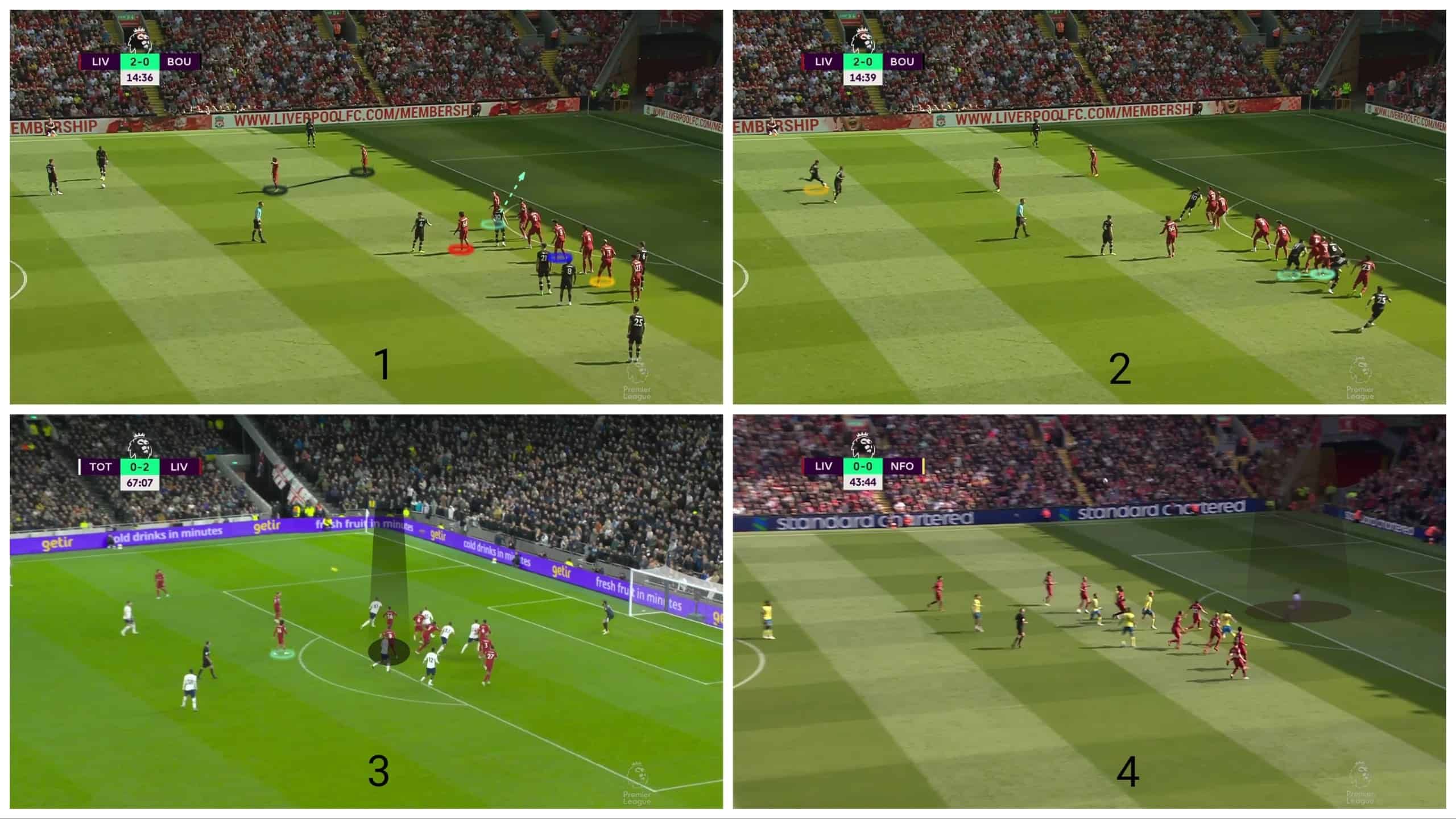
It is common to manipulate the high line with two takers to make sure the line moves early before the real taker plays the cross which covers the offside, giving the attackers more space to run. It also aims to disorganise the line because they wouldn’t drop together. However, as shown below, it doesn’t affect Liverpool’s defenders, who are clever against this trick.
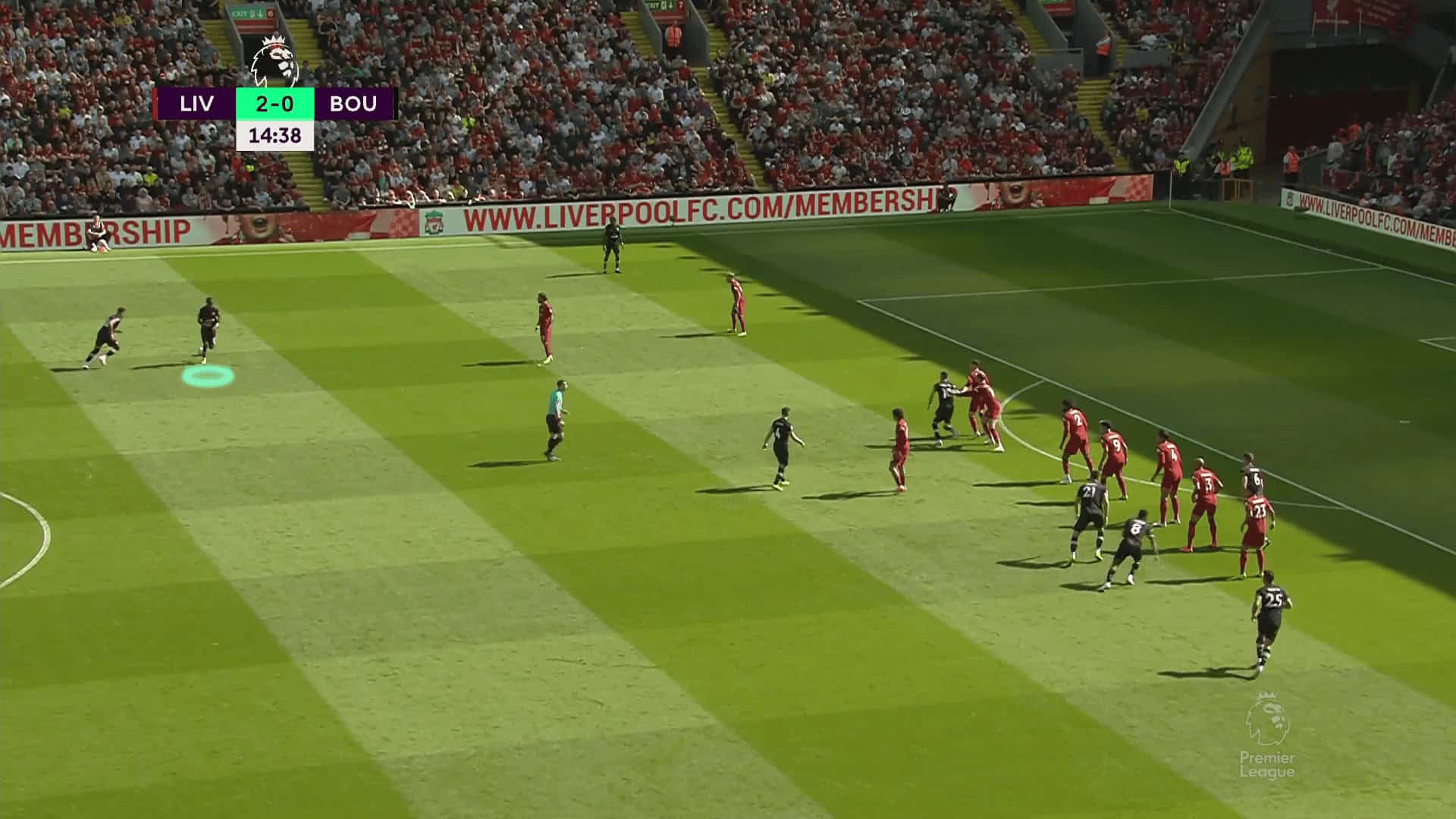
Offside attackers
We will discuss the different ways the opponents try to overcome this type of defending, and let’s start with Gianni Vio’s Tottenham Hotspur.
The main idea here is that Spurs’ three offside attackers, as shown in the first picture, aim to block the three defenders before the last one. Darwin Núñez runs back to defend the far post against Richarlison, who starts in a deeper position with a black arrow, to run with high momentum overcoming Núñez. He also runs in a curved path, acting like he attacks Fabinho to attract him to block him from the game later. The attacker, with the yellow arrow, runs in front of the first defender in the line who Lucas Moura attracts in green.
In the second photo, Fabinho, in green, goes to block Richarlison with a slight push from Harry Kane; then, Richarlison runs on the outside. In the third photo, when the taker plays the cross, the three blocks happen (in green). Moura attracts the attention of Liverpool’s first defender, in blue, leaving the yellow arrowed attacker alone to receive Richarlison’s headed pass.
In the fourth photo, Richarlison, in yellow, shoots the ball directly because of Núñez, who is close to him, and the result is a goal.
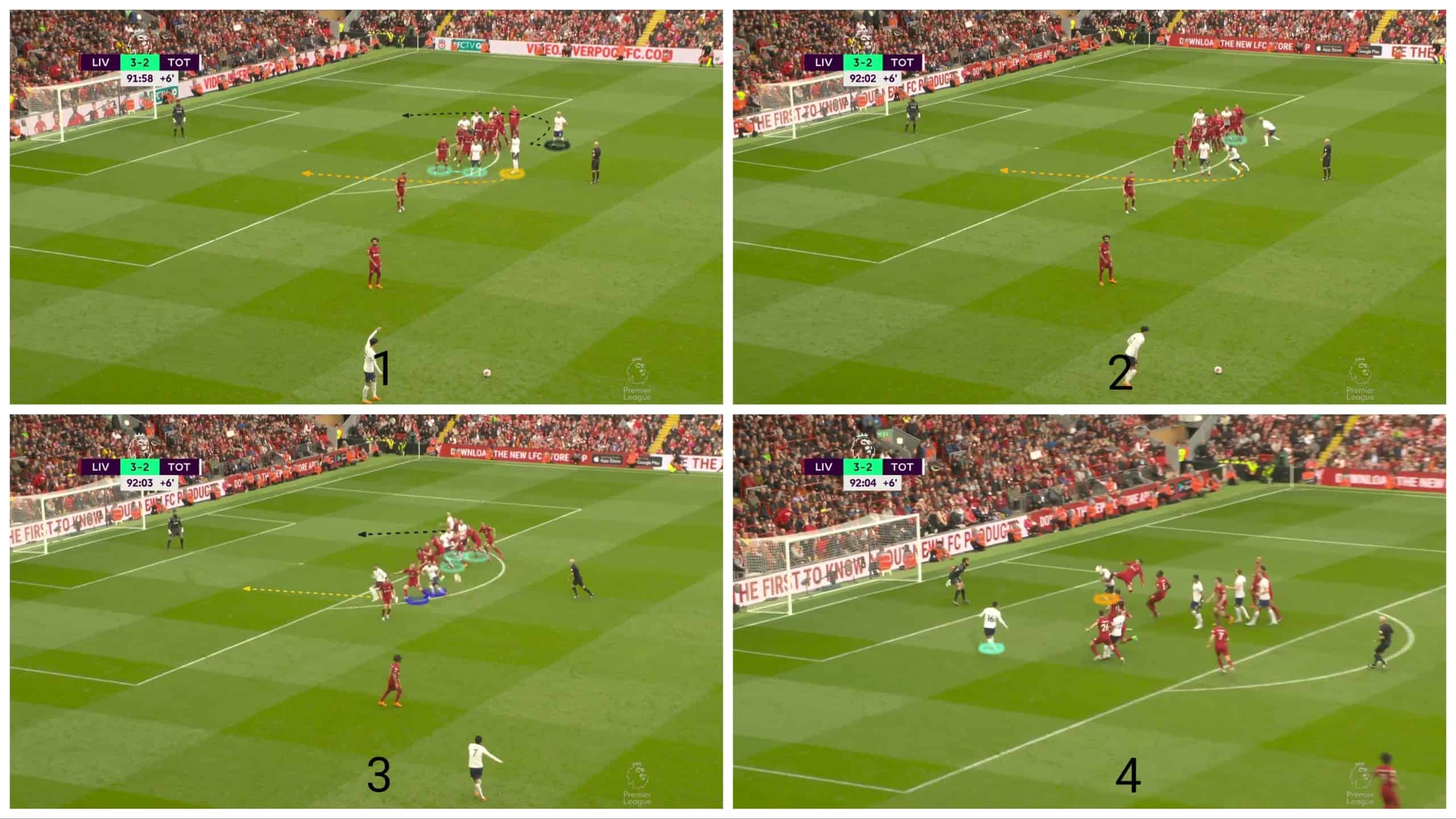
Here, there is another use of offside attackers getting the second pass, as shown in the first photo. The taker passes to the yellow runner, who comes with high momentum to pass the ball to the green player, as shown in the second photo, but the brilliant Alison saves the ball to get to one of the defenders, as shown in the third and fourth photo.
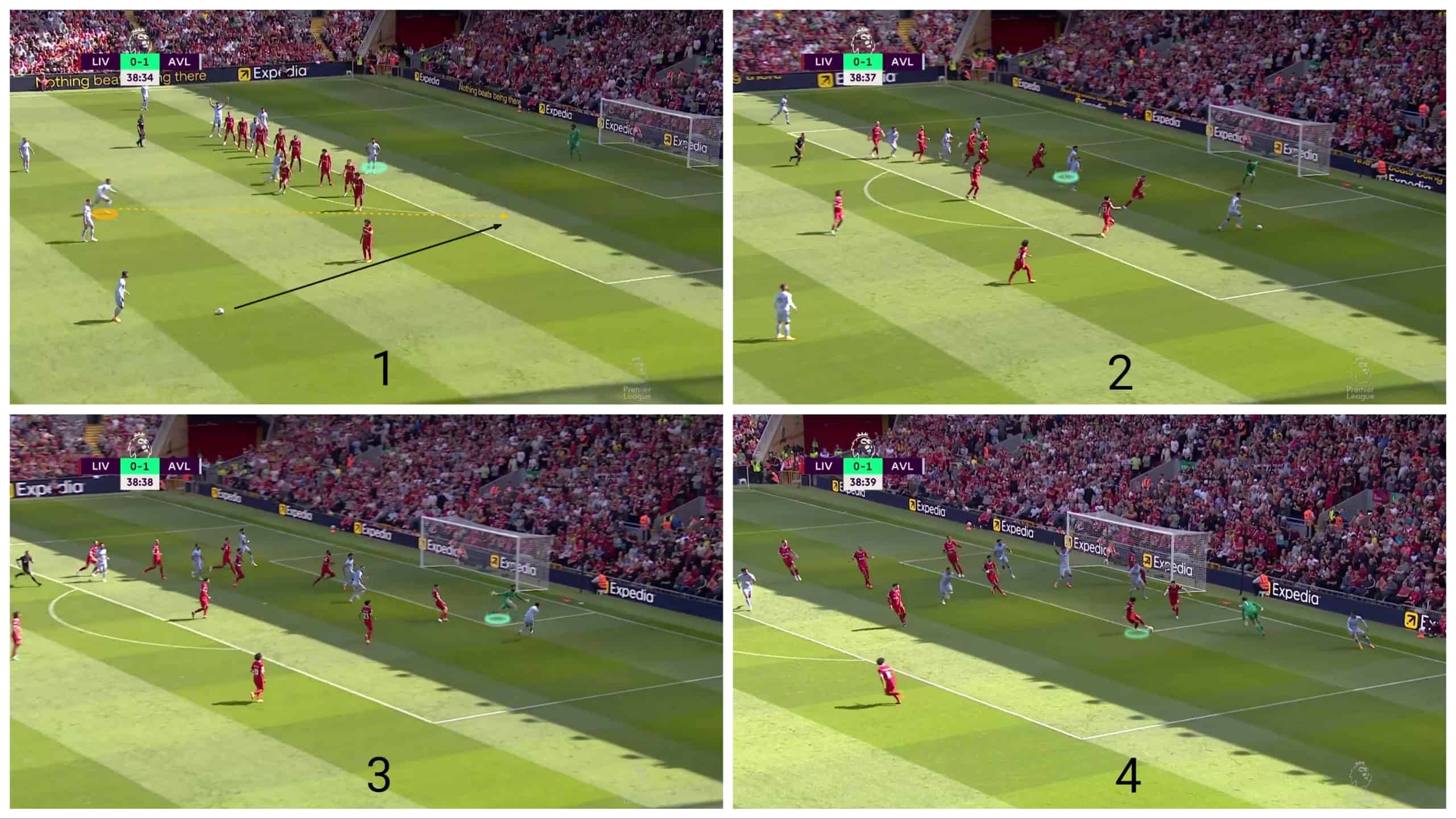
Targeting the second ball defender
Here, Napoli target the space behind the second ball defender, who is usually Firmino. As shown in the first and second photos, The target player is the one in front of Firmino, in green. Two runners, in yellow, run to attract Liverpool’s near-post two defenders.
In the third photo, the idea is clear, The player who will score the goal is in green in front of Firmino. In the fourth photo, he is alone in yellow with the help of the two green attackers who attracted the two near-post defenders, and the result is a goal.
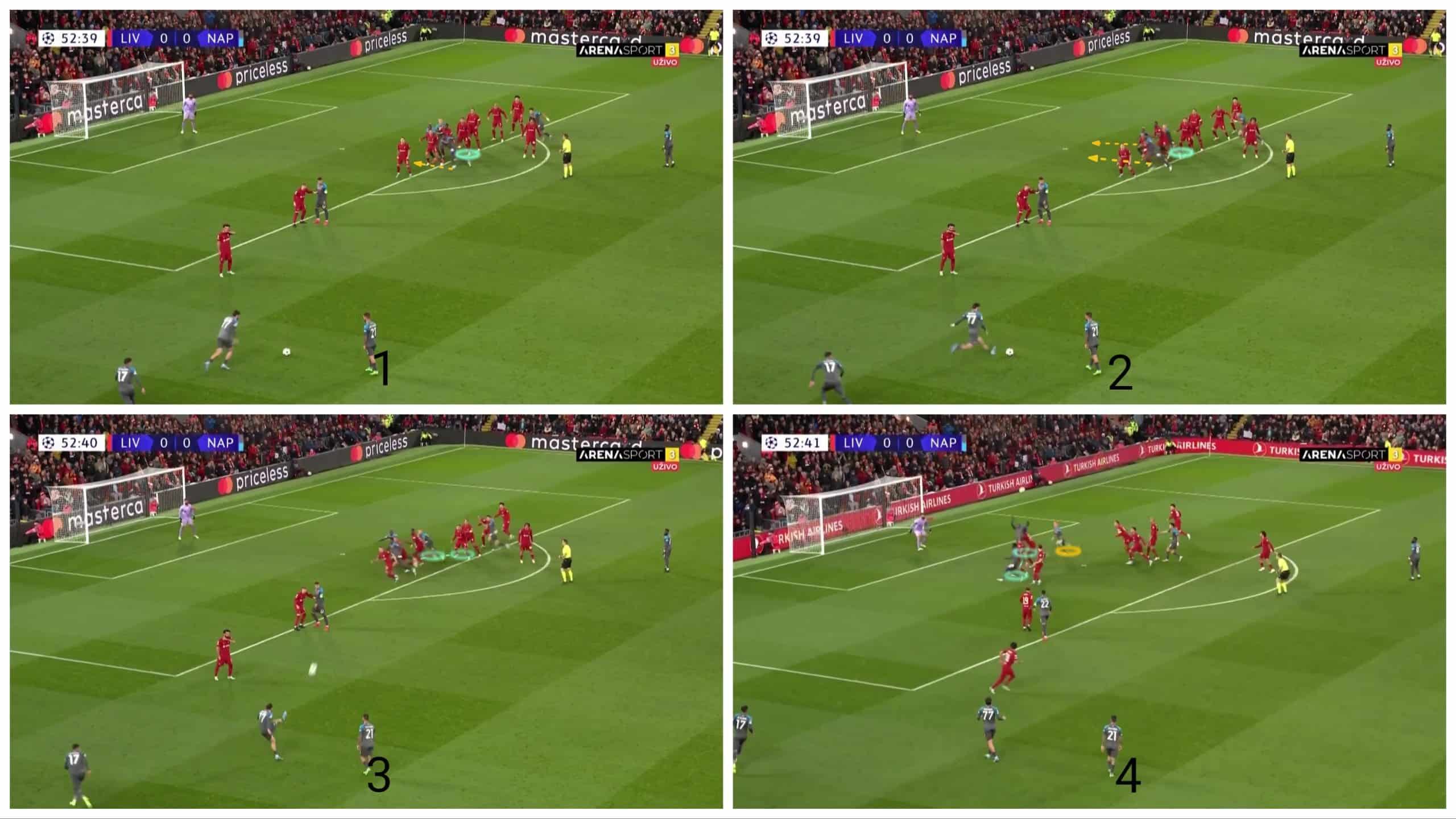
Overloading the far post
Let’s focus on the last three defenders — Virgil van Dijk, Fabinho and Luis Díaz. In the first photo, the player with a yellow arrow blocks Van Dijk, the red player attracts Fabinho’s block, and the blue-arrowed player stretches the width to attract the attention of Díaz to make the white-arrowed player free to attack the space.
The deeper attacker circled in black attracts Arnold’s attention, making it easy for the player with the green curved arrow who will try to receive the headed pass.
In the second photo, everything is clear now, the two far-post attackers (in yellow) make it difficult for Díaz, and the two mentioned blocks are in green, while the second pass receiver is shown in blue. The first attacker can’t pass the ball correctly, and then Andrew Robertson gets the ball, as shown in the third and fourth photos.
Now, it is clear that the high line made it more difficult for the attackers because the headed pass or shot is far from the goal, which usually needs a second pass receiver and a complicated tactic.
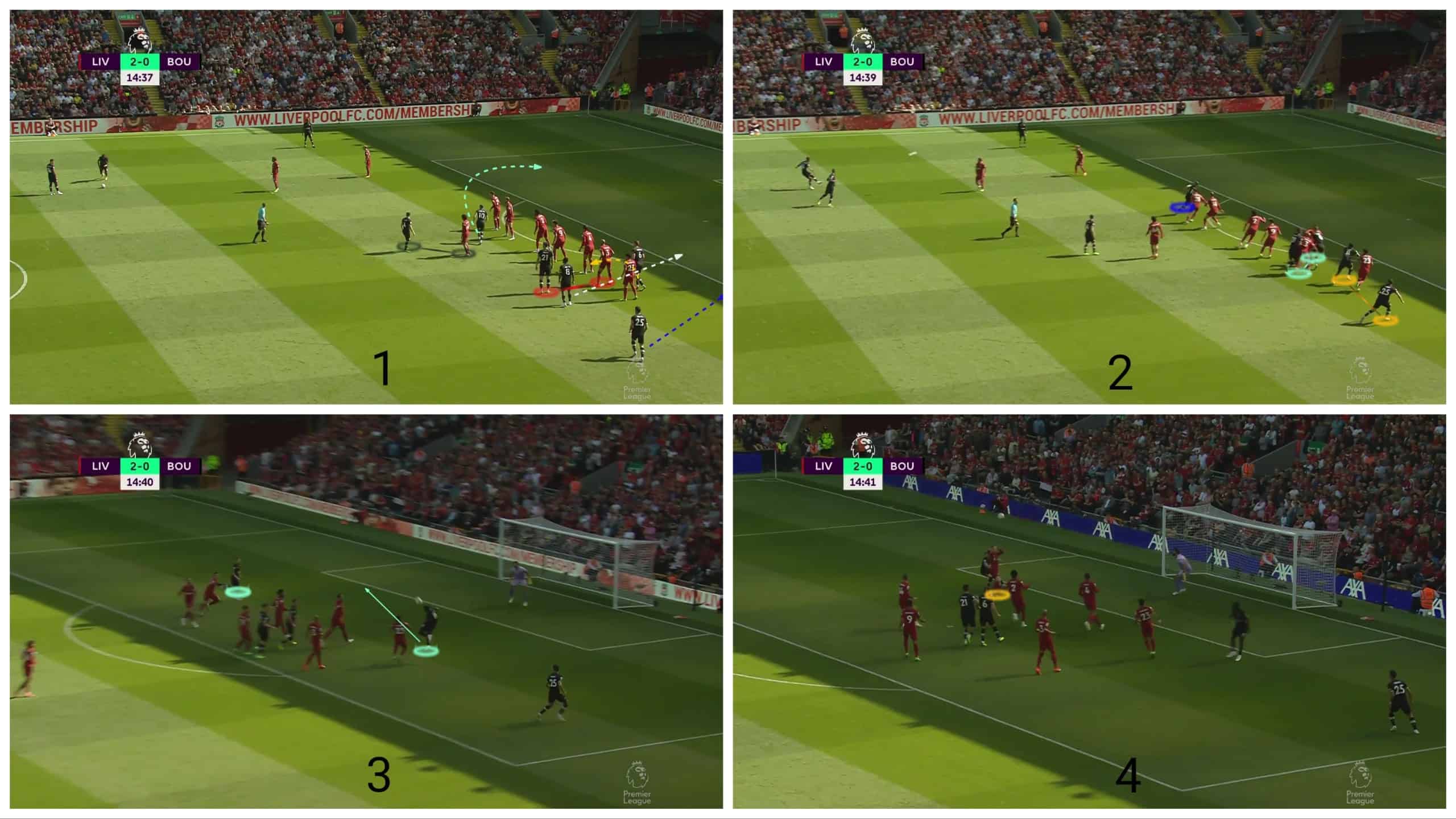
Mismatch before the first player in the line
Lastly, let’s take a look at one way in which opposing teams can overcome Liverpool’s scheme.
In the first photo, Harry Kane is highlighted in green in an offside position. When the taker starts to move, in the second photo, he drops back to be onside in front of Andrew Robertson, who is good at getting the first touch but not better than Kane. Kane puts his body in front of the defender, getting the first touch, as shown in yellow in the third photo. This occurs because Kane is better in aerial duels than Robertson — this is called a mismatch.
In the third photo, it should be mentioned that the three green attackers block the defenders, preventing them from getting the ball. They also wait for the rebound ball from the goalkeeper if it comes. The routine succeeds, but the ball is outside near the far post, as shown in the fourth picture. This demonstrates how teams can beat Liverpool’s scheme when positioned far away from the goal.
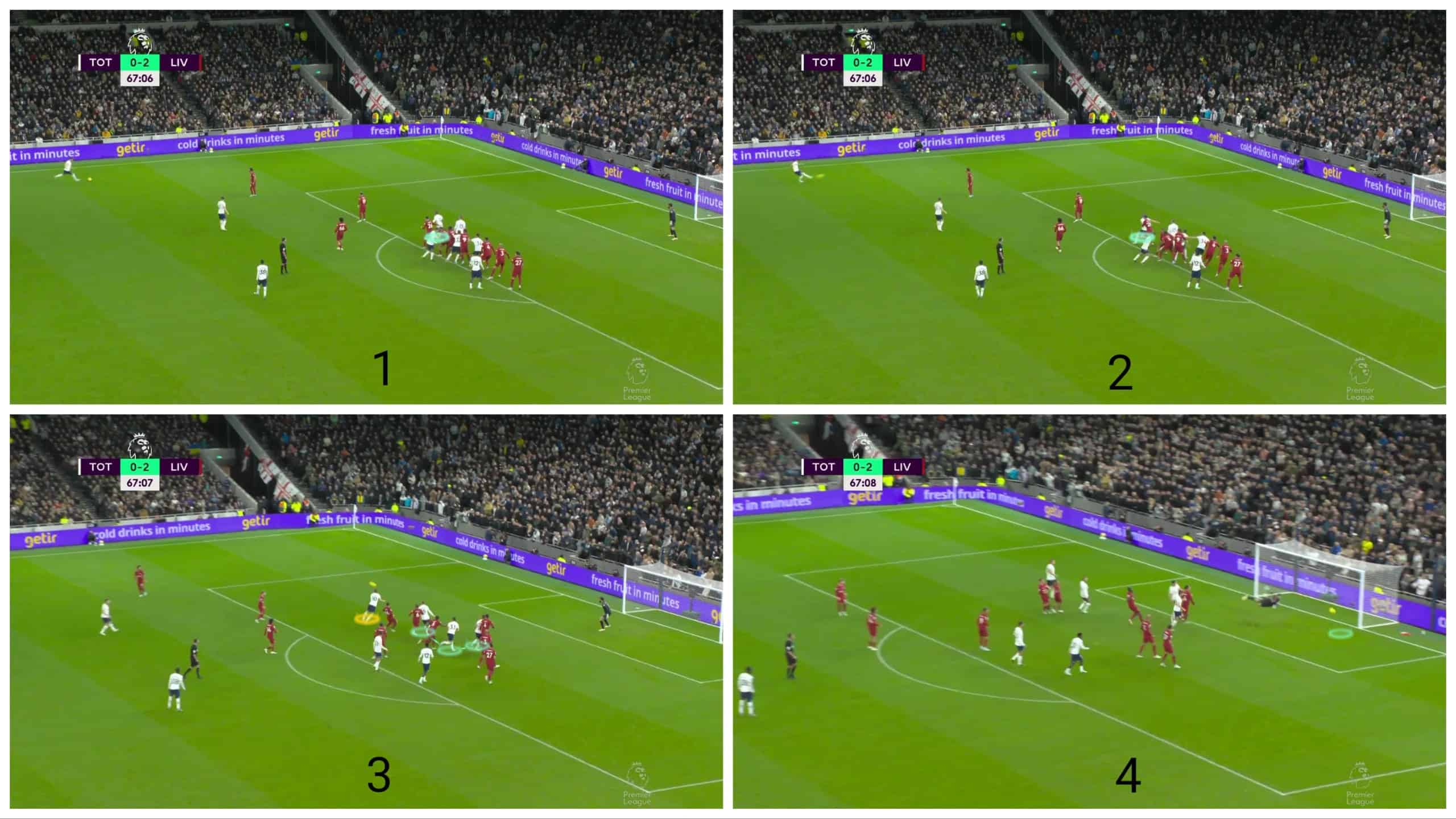
Conclusion
This analysis has illustrated Liverpool’s defensive tactics at free kicks. They rely on zonal marking and a high line with a late drop, depending on the offside trap and the abilities of their brilliant goalkeeper, Alisson Becker.
Although this method is hazardous, they have the perspective that even if the opponent gets the ball, turning it into a goal is difficult because the distance is far from the goal, except with a complex tactic. We have also seen some of these tactics to face Liverpool’s brilliant scheme in defending free kicks.
There are many other systems to defend free kicks. Some teams defend with a high line but with an early drop, some teams resort to the same zonal marking but with a deep line, and there is also man-marking. Each scheme has its own perspective.

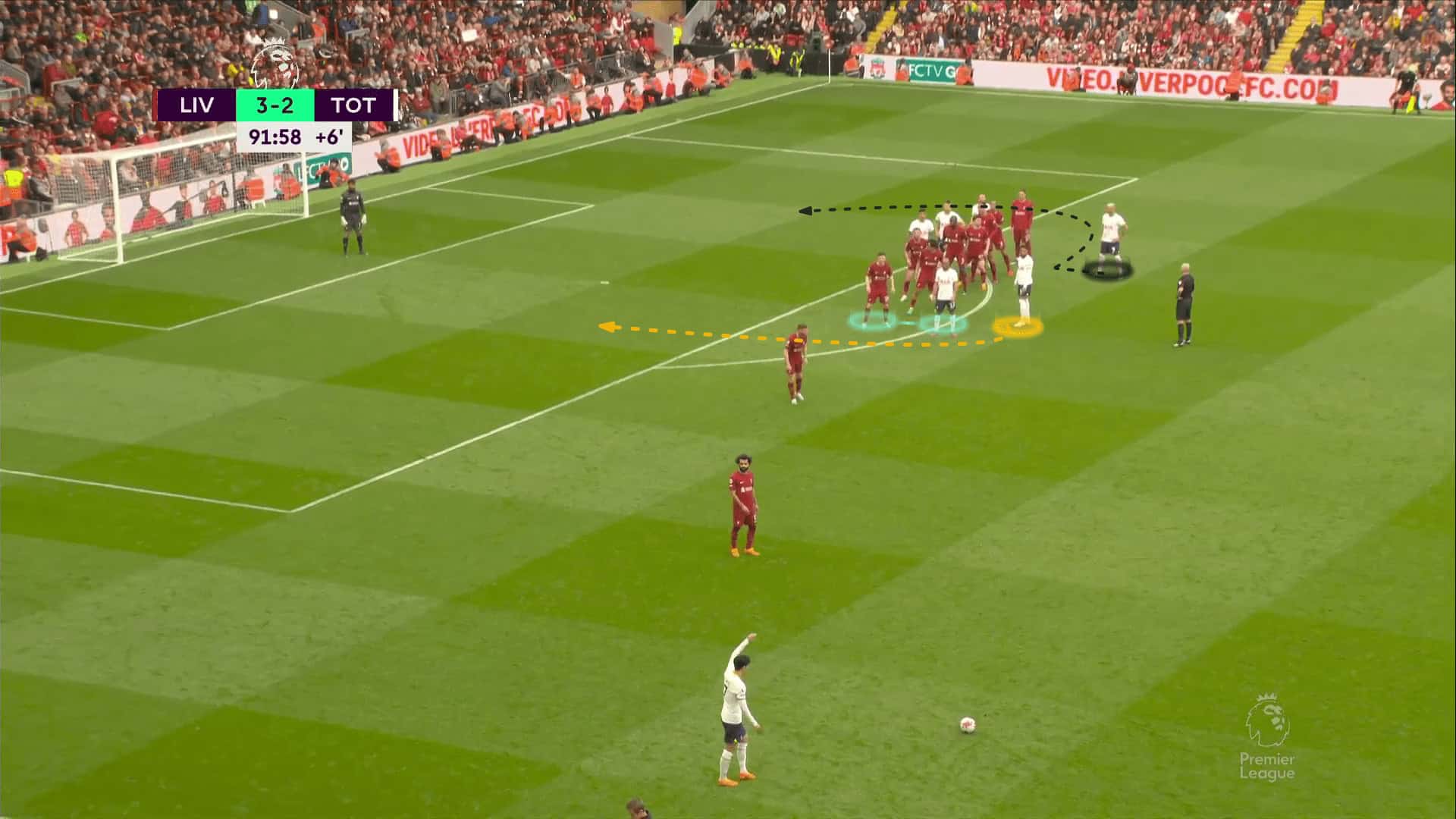




Comments